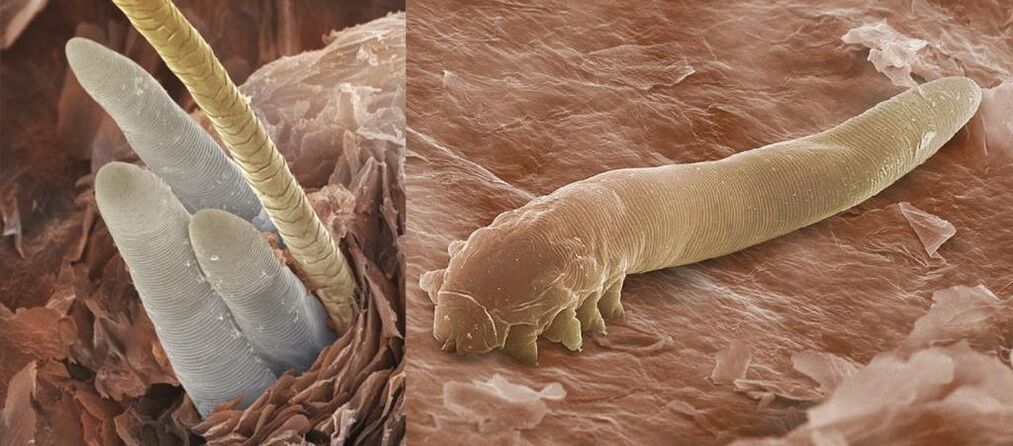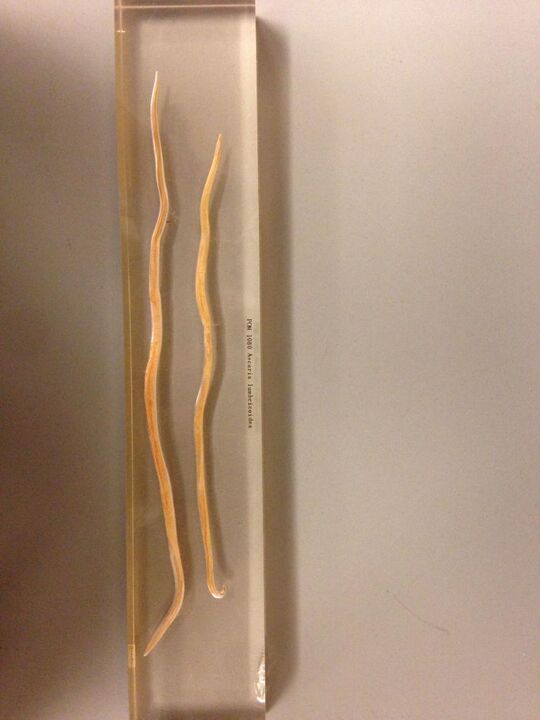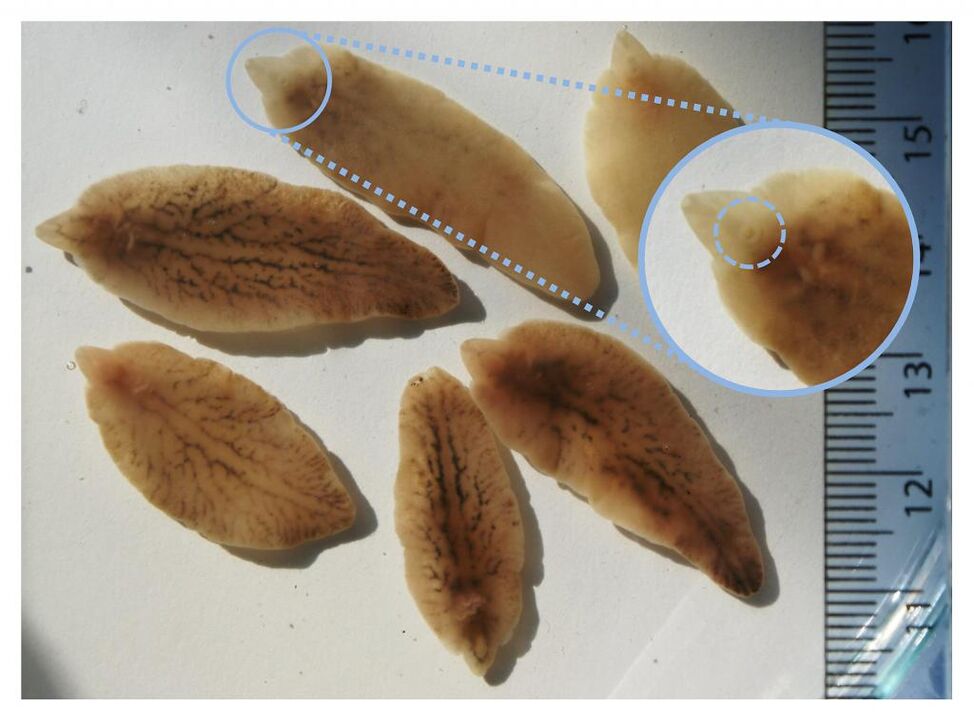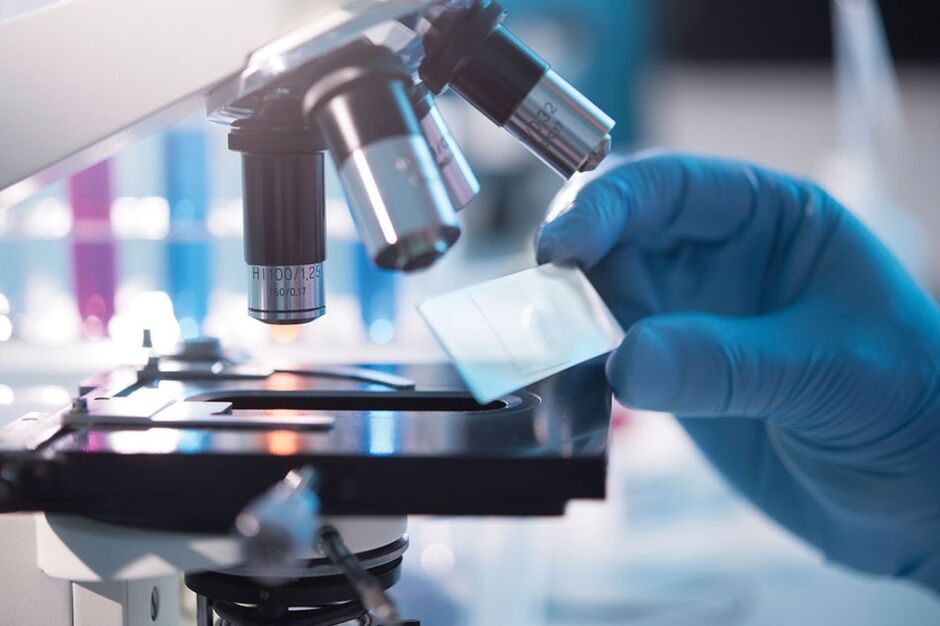Parasitic infections present a varied range of symptoms and diseases caused by the introduction of eggs or adult parasites in the human body.Often, the first signs of the disease cannot be detected for several days, and in some cases, several months or even years.This is due to the life cycle of parasites and their main functions: good camouflage and preserving their lives by taking nutrients from the host's body.
The types of parasites and their characteristics
Parasitic infections, depending on the specified properties of their manifestation, are divided into three groups:
- Ectoparasis.
The main location is the surface of the human body.These include lice, fleas, ticks and beds.They feed mainly with human blood, although in some cases, such as mites that cause demodicosis, the main food is the secretion of adipose glands or dead epithelial cells. The first signs of a parasitic infection are easy enough to recognize, as they cause itching and burning in their habitats.Some ectoparasis are carriers of serious diseases: typhus, anthrax, encephalitis and tripanosomiasis.They cause great damage to human health, including death.
The first signs of a parasitic infection are easy enough to recognize, as they cause itching and burning in their habitats.Some ectoparasis are carriers of serious diseases: typhus, anthrax, encephalitis and tripanosomiasis.They cause great damage to human health, including death. - Endoparasites (protozoa).
Mainly affects the internal organs.They are unicelular in structure, namely the name protozoa.Despite this, they can lead to severe forms of the disease.The main diseases of this group are parasitic blood infection caused by toxoplasmas and intestinal infections caused by Amoeba or giardia. - Helminths.
They are the causative agents of the most common forms of parasitic infections.In the human body, their developmental cycles occur mainly in the intestines and tissues, where the manifestation of the symptoms of the disease begins.
Round worms (nematodes)
These are the parasites whose body is round in the cross section.The sexual characteristics are easily distinct.Females are usually larger than males.But representatives of this class also have hermaphrodes.All nematodes go through stages of development: eggs, larvae and adults.This class includes:
- Pin worm.The disease is caused by enterobiasis.It mainly affects preschool and elementary school children.
- Whipworm.Causes trichuriasis of the disease.Has a special body shape.2/3 of the body length has a thin diameter, reminiscent of human hair or strand.The other end of the body is larger in diameter and contains the intestines.
- Ascaris.The disease is caused by ascariasis.Adults reach 25 cm (male) and 40 cm (female).Once the larva enters the human body, it passes through the stomach and enters the small intestine.From there, through pores with blood flow, it enters the liver, then into the heart and then into the lungs, where it develops within 7-10 days.Then the larvae begin to rise in the larynx.Once they reach the oral cavity, they are re-regulated.Once they are in the small intestine, the larvae could not go back to the bloodstream through the pores due to their large size.There they grow in adults within 2-3 months.After that, the reproduction begins and the cycle is repeated.The female can lay more than 200,000 eggs a day.

Tapeworms (Cestodes)
These are the parasites whose body resembles the shape of a bar.A distinctive feature of this class is the lack of a digestive system.These include:
- Echinococcus.The disease is caused by ecinococcosis.This parasite is small size (2-9 mm) and consists of several segments and suckers.The uterus of a sexually mature individual contains a large number of eggs, within which there are larvae.The main locations of echinococcus localization are the liver and lungs.It causes a chronic disease called the hydatid cyst.
- Bull tapeworm.Causes Tenarinchiasis disease.In the larvae phase, it has an intermediate host - livestock.Once in the human body, it develops in the small intestine in the strip phase.The body of an adult parasite has up to 1000 segments, and can reach 4-10 meters in length.
- Pork Tapeworm.Causes the disease of the disease.From the outside, it is very similar to a bull upholstery.It also has intermediate hosts: pigs, dogs, camels, rabbits and rabbits.In humans it is a parasite in the gut.The size of an adult individual does not exceed 4 meters long.
- Tapeworm is wide.The disease is caused by diphyllobothriasis.Lives in freshwater water bodies.He uses crustaceans and fish as an intermediate host.In the human body it parasitizes the small intestine.An adult can reach a few meters in length.
Flat worms (fluke)
During their life cycle, these parasites can change some intermediate hostees.People can be parasitized in any organ.This group includes:
- Skistosomes.The disease is caused by skistosomiasis.They can enter the human body through contact with contaminated fresh water.The parasite penetrates the skin and enters the circulatory system, where it begins to multiply actively.Women can produce from 300 to 3000 eggs daily.Further, with blood flow, eggs spread throughout the body and continue their development in any organ.Their body length does not exceed 0.1-0.2 cm.
- Liver flows.The disease is caused by opisthorchiasis.The length of an adult varies from 3 to 5 cm.When it enters the human body, it parasites bile ducts, gall bladder, liver and pancreas.It is fixed to these organs using suction cups located in the body.

Ways of penetrating parasites into the human body
- The nutritional pathway of infection is considered the most common.A person is infected with the parasite by eating poorly washed vegetables and fruits.Meat that has not suffered sufficient heat treatment is particularly dangerous.Also, a person becomes infected with a parasitic infection if the rules of personal hygiene are not followed.For example, do not wash your hands before eating.
- Transplacental road.Parasitic infection is transmitted by a pregnant woman through the placenta in the baby.For example, these are diseases such as toxoplasmosis, malaria or worms.
- The Perkutan road.The parasite enters the human body through the skin.These are mostly skistosomes and bond worms.
- Contact path.The parasite is transmitted through dirty hands, contaminated and internal personal items.This is how the lice, choices and worms of the pinworms are more often transmitted.
- Transmission route.The infection occurs after the bite of the insects holding parasites.For example, malaria.
Symptoms
Many parasitic diseases have no symptoms in the early stages.This is due to the stages of development of the pathogen.Each individual type of parasite is manifested differently as it grows.Common general symptoms of parasitic infection include:
- Itching.
- Redness of the skin like urticaria.
- Diarrhea.
- Constipation.
- Flatulence.
- Nausea, vomiting.
- Spasms and pain in the gastrointestinal tract.
- Loss of body weight without diet or increased physical activity.
- The feverish condition.
- High body temperature (38-40 ˚C) for a long period.
- Prolonged dry cough attacks.
- Enlarged lymph nodes.
- Painful sensations in the muscles.
- Disordishes psycho-emotional disorders.
Troubleshooting

If you suspect the presence of parasitic diseases, you should undergo a series of tests.The diagnosis of parasitic infections allows us to determine the presence or absence of a parasite, its type and location in the body.The data obtained will help the doctor make the correct diagnosis and prescribe the correct treatment.
Diagnostic methods include:
- Stool's exam.It allows you to determine the presence of most types of parasites living in the intestines.Their eggs, larvae and body segments are excreted in the feces.There are two types of analysis:
- A stool sample is examined for helminth eggs and larvae.The analysis is delivered to the lab, where the doctor stains and examines them under a microscope.This method is often used, but it is not as accurate as it should be.To make a final diagnosis, the patient must undergo this test up to three times with a short interval.This is due to the life cycle of parasites and egg laying, which are detected by this method of research.
- Washing from anus folds.This test is used to detect only one type of helminth worms.Parasitic infections are more common in children than in adults.For this reason, this analysis is mainly performed for children.The lab technician moistens a cotton swab or glass in water or glycerin and rinsing it from perianal folds.Next, the resulting material is applied to a glass slide and examined under a microscope.This analysis is also done using a different method: a laboratory assistant glues a piece of adhesive tape to the anal passage, crushes it and peel it.The adhesive tape is then stuck in a glass slide and is also seen under a microscope.The parasite is diagnosed quite accurately.Using these methods, the laboratory assistant is able to examine not only the helminth eggs, but sometimes the adult individuals.
- Examination of cerebrospinal fluid, saliva, duodenal (bile), urine content.Described based on the results of a patient's study to determine the presence of the parasite and to determine its location.These biological fluids are analyzed using microscopy and macroscopy.First, the resulting sample is examined for the presence of adult individuals, and then a microscope was performed to detect eggs and parasitic larvae.
- Blood test.Modern methods of blood testing for parasitic infections make it possible to determine the presence and type of pathogen with high accuracy.Three types of such diagnostics are used:
- Serological reactions.Allows you to determine the presence of parasite antibodies in the patient's blood serum.This method is considered very specific but inferior to PCR diagnostics.
- PCR diagnostics.This method is based on the identification of the DNA of parasites in any biological fluid that is obtained for analysis.
- Genetic research.It involves detecting the parasite genome in a patient's blood sample.This method is used much less frequently than everyone else, but has high accuracy.
- Examination of biopsy material and lymph nodes.For this analysis, the doctor extracts a small portion of an organ, tissue or a whole lymph node and sends it for histological examination.This is diagnosed with the presence or absence of parasites.
Recommendations for preparation for testing
Before taking tests for parasitic infections, you must prepare them properly for them.If the recommendations are followed, the accuracy of the diagnosis increases, as the material does not contain intruders that affect the effectiveness of research methods.
Preparation for an excrement test:
- Antibiotics, anti-inflammatory drugs and antacids should be stopped.The use of drugs and other medicines containing bismuth and iron is also unacceptable.
- If an X-ray examination is performed using barium or a colonoscopy, during which an enema was performed to clean the intestines, then an excrement test can only be taken after 2-3 days.
- It is not recommended to donate excrement if menstrual or hemorrhoids begin to worsen.
Preparation for a blood test:
- It is necessary to stop taking pharmacological drugs that affect blood count.
- Three days before the test, you should follow a light diet, not eat fatty foods and give up alcohol.
- A blood test for parasitic infections is taken on an empty stomach.Drinking a small amount of clean drinking water is allowed.
For other tests, no special preparation is required.You will need to follow the doctor's recommendations.
Treatment
Unfortunately, the symptoms of parasitic infections cannot always be detected in the early stages of the disease.In such cases, treatment begins late.It is important to understand: the longer the parasite remains in the body, the harder it will be to get rid of it.
The therapy of infectious and parasitic infections is divided into two areas:
- Symptomatic treatment.In order to eliminate clinical manifestations of the disease.These include lowering body temperature, removing redness and itching, and normalizing the functioning of the gastrointestinal tract.
- The etiological treatment of parasitic infections is intended to get rid of the causative agent of the disease.
In some cases, surgery may be needed.Is applicable to alveococcosis, echinococcosis and some types of trematod infection.
When the body is dehydrated, salt -containing solutions are described.
Only a doctor can prescribe treatment for parasitic infections based on laboratory tests and patient interviews.
PREVENTION
It is very important to observe the prevention of parasitic infections.In most cases, this will help prevent pathogens from entering the body.

Preventive measures include:
- Compliance with personal hygiene rules: You must wash your hands before eating food, after visiting the toilet and returning home.
- Vegetables and fruits should be well washed.
- It is necessary to perform sufficient treatment of meat, fish and seafood.
- Tap water should not be used as drinking water, as it may not always be without parasites.Using home filters as additional cleaning will not help.The best option would be to drink boiled or bottle water.
- If pets live at home, they should be known once every six months.You should also limit contact with your pet if you show signs of parasitic diseases and contact a veterinary clinic.
- You need to iron the interior (especially children) after washing.
- After visiting exotic places, when working with land, as well as employees of children's institutions, it is recommended to examine once a year for the presence of parasitic infections and, if necessary, perform prophylaxis with medication.
























